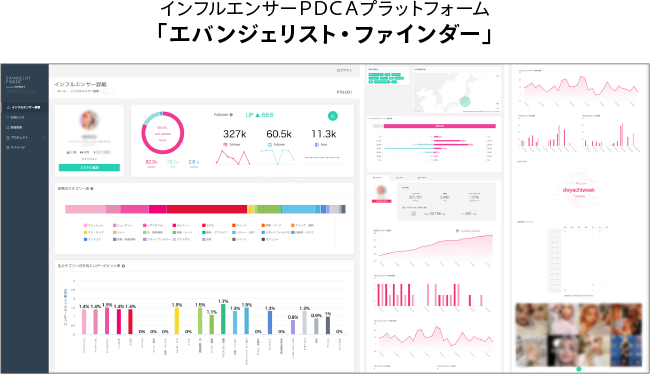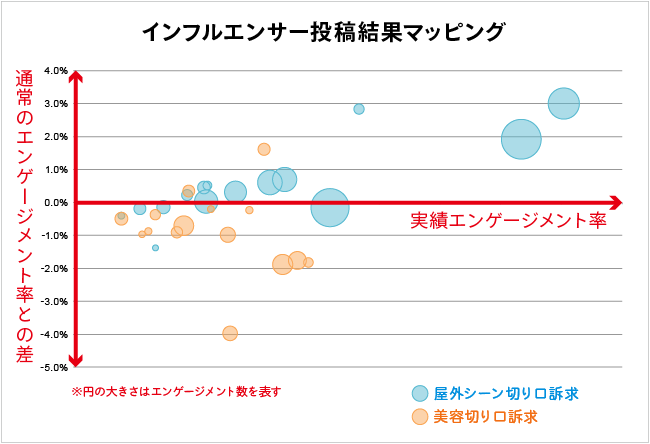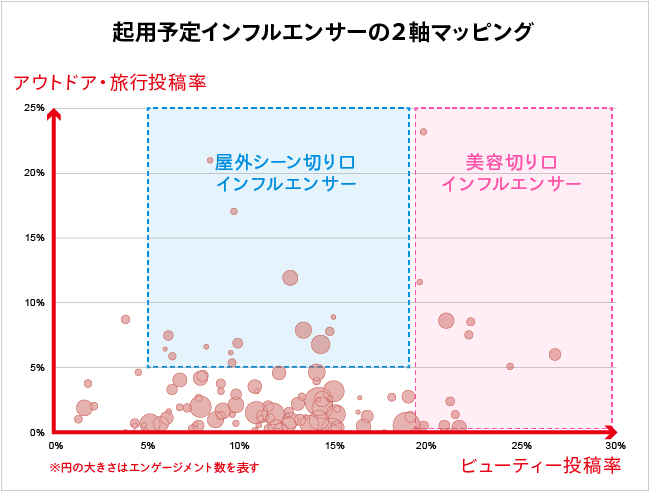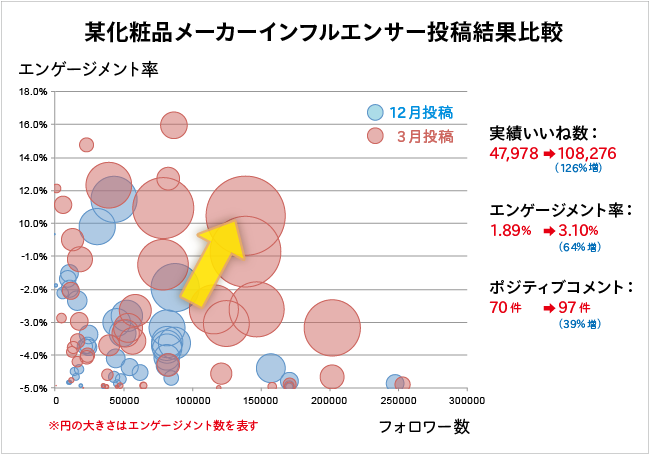Over the past three installments, we have presented various analyses and insights concerning influencers and influencer fans. The first installment provided an overview of influencer marketing based on several data points. The second installment classified influencer types. The third installment classified influencer fans—those influenced by influencers—revealing differences in their purchasing behavior influence and resistance to PR posts.
This final installment focuses on introducing solutions for influencer marketing, centered around Dentsu Inc.'s original "EVANGELIST FINDER."
The influence influencers exert on their fans is also drawing attention from marketers in the market and within companies. The Google search volume for "Influencer marketing" increased by 5000% in 2016 and continues to rise (Source: Google Trends).
Furthermore, the number of PR posts on Instagram from 2016 to 2017 increased by 200% globally and 400% in Japan, showing particularly significant growth domestically (Source: Klear).
Alongside market expansion, influencer formats have diversified. Beyond bloggers, Instagrammers, Twitter influencers, and YouTubers, new categories have emerged: Pinners (influencers posting on Pinterest), Livestreamers (influencers doing live broadcasts), V-Tubers (virtual YouTubers), and TikTokers (influencers active on TikTok).
Furthermore, specifically on Instagram, the spotlight has shifted from power influencers (※) like famous celebrities and models to micro- and nano-influencers (※). As the chart below (Japan) clearly shows, the average follower count of Instagrammers posting sponsored content has been steadily declining since summer 2016.
As a result, the number of influencers hired for a single campaign has increased, creating a need to manage multiple influencers simultaneously.
※Power Instagrammer: An Instagrammer with 100,000 or more followers
※Micro-influencer: Instagrammer with 10,000+ followers
* Nano-influencer: Instagrammer with 1,000+ followers
Long-Term Utilization of Influencers
In the era when blogs were mainstream, a single article could deliver reasonably in-depth information. However, with platforms like Instagram and Twitter, communication becomes more fragmented. This makes it difficult for influencers to fully grasp a brand's message and effectively convey it to their followers through a single campaign or post.
Therefore, to achieve greater effectiveness, it is crucial to implement ongoing initiatives and enhance the influencer's loyalty to the brand.
Globally, 62% of brands are said to have "brand ambassador" contracts with influencers (Source: Association of American Advertisers). Similar trends are already visible among Japanese brands.
While some brands request exclusivity from contracted influencers, the terms are generally less restrictive than traditional celebrity endorsements. Most cases involve asking influencers to commit to brand promotion within the bounds of their own discretion.
Thus, for brands to build long-term relationships with influencers while achieving greater effectiveness, they must constantly monitor key metrics: what kind of fans follow the influencer, what kind of posts they typically make, and especially which posts generate significant engagement.
Managing this large volume of data, including its progression, allows brands to bundle the "quantity" of influencers—who have become a long-tail resource—with the "time" needed to nurture relationships with them. This enables the long-term utilization of multiple influencers.
Influencer PDCA Platform
To address this need for long-term influencer utilization, Dentsu Inc. has developed and operates the Influencer PDCA Platform "EVANGELIST FINDER".
Initially launched in 2012 as a matching database to detect bloggers optimal for brands, it was subsequently upgraded in 2016. To support Instagram, Twitter, and Facebook, we based further development on SPRAY, the influencer marketing platform provided by Crossling Inc., updating it into a high-functionality version exclusive to Dentsu Inc.
Here's a brief explanation of its functionality for Instagram influencers. Currently, it continuously visualizes data for approximately 4,500 registered Instagram influencers (as of September 14th), including follower growth trends, average engagement rates (*), and hashtags used. It also displays follower demographic data, the influencer's typical posting characteristics analyzed by image AI, and engagement rates for each posting style.

This allows you to understand what attributes and preferences of people you can likely reach when using a particular Instagrammer. You can also see if that Instagrammer frequently posts fashion-related content, or if their beauty-related posts particularly get a lot of likes (i.e., have high engagement rates).
This enables precise verification of who to engage among numerous influencers and whether the desired effect was achieved after engagement.
*Engagement rate: (Likes + Comments) ÷ Followers
Influencer PDCA Model
By leveraging EVANGELIST FINDER's solution, it has become possible to meticulously execute the PDCA cycle for influencer marketing. Now, let's explain specifically how this PDCA cycle is implemented.
PLAN: Category and Context Simulation
First, we analyze the brand's challenges and target insights to simulate what context and influencers would best convey the message. We simulate multiple contexts per appeal point and target category to verify which patterns are most effective.
Furthermore, we map potential influencers by their posting characteristics and categories to determine which influencers to engage. For example, for a UV serum campaign, we map influencers from both outdoor scene and beauty perspectives, prioritizing those with high engagement rates in each category.
DO: Influencer Experience and Content
Next, we request posts (PR posts) from the selected influencers under conditions tailored to the context, such as testimonials (recommendations), invitations to product launch events, invitations to experience events, or participation in campaigns.
To anticipate search-driven traffic or further strengthen the context, we may also request specific hashtags be included in their posts. For events, we make efforts to enhance the brand experience to deepen their understanding of the brand.
CHECK: Analyzing and Validating Post Results
Next, we aggregate and analyze reactions to the posts (likes, comments) to verify which predefined patterns (post context or influencer category) proved most effective.
We also conduct positive/negative sentiment analysis on comments. For positive comments, we analyze their quality—whether they indicate brand affinity or purchase intent—to verify the impact on followers. For the UV serum campaign, we found the outdoor scene approach was more compatible with the product than the beauty-focused approach.

ACTION: Converting Influencers into Brand Ambassadors
Finally, we determine which influencers to continue working with. When hiring new influencers, we prioritize those similar to the high-performing influencers.
Simultaneously, we analyze the most effective post contexts, images, hashtags, and text to inform future planning. This PDCA cycle naturally enhances effectiveness while deepening the influencer's brand understanding through ongoing engagement.
Let's examine an actual case study. Below is a comparison of results from a cosmetics brand that held two experiential events, inviting influencers to create PR posts. The two events were held three months apart, featuring the same product, the same budget, and the same number of influencers.
As you can see, both the engagement rate and the volume of positive comments improved significantly in the After (red bubbles) compared to the Before (blue bubbles).
Influencer Marketing: From "Pre-booked" to "Operational"
Traditional influencer marketing often focused solely on "who to hire," with follower count being the primary indicator of influence. This approach made post-campaign effectiveness verification difficult, preventing PDCA cycles and resulting in one-off campaigns.
In contrast, as mentioned earlier, utilizing EVANGELIST FINDER enables a shift from the so-called "reservation-based" model, where exposure is the goal, to an "operational" influencer marketing approach. This allows for continuous PDCA cycles to find the optimal solution.
The Cannes Lions International Festival of Creativity introduced a new Social & Influencer category in 2018. This development symbolizes a shift in influencer marketing focus: attention is now directed not only at "WHO" (the influencer) but also at "WHAT" (the creative content).
Operational influencer marketing offers benefits beyond simply enhancing effectiveness through PDCA cycles. Continuous influencer engagement deepens influencer loyalty and brand understanding, leading to creations that effectively convey brand messages.
Thus, maximizing the loyalty and motivation of the influencers you work with is an indispensable perspective for future influencer marketing.











